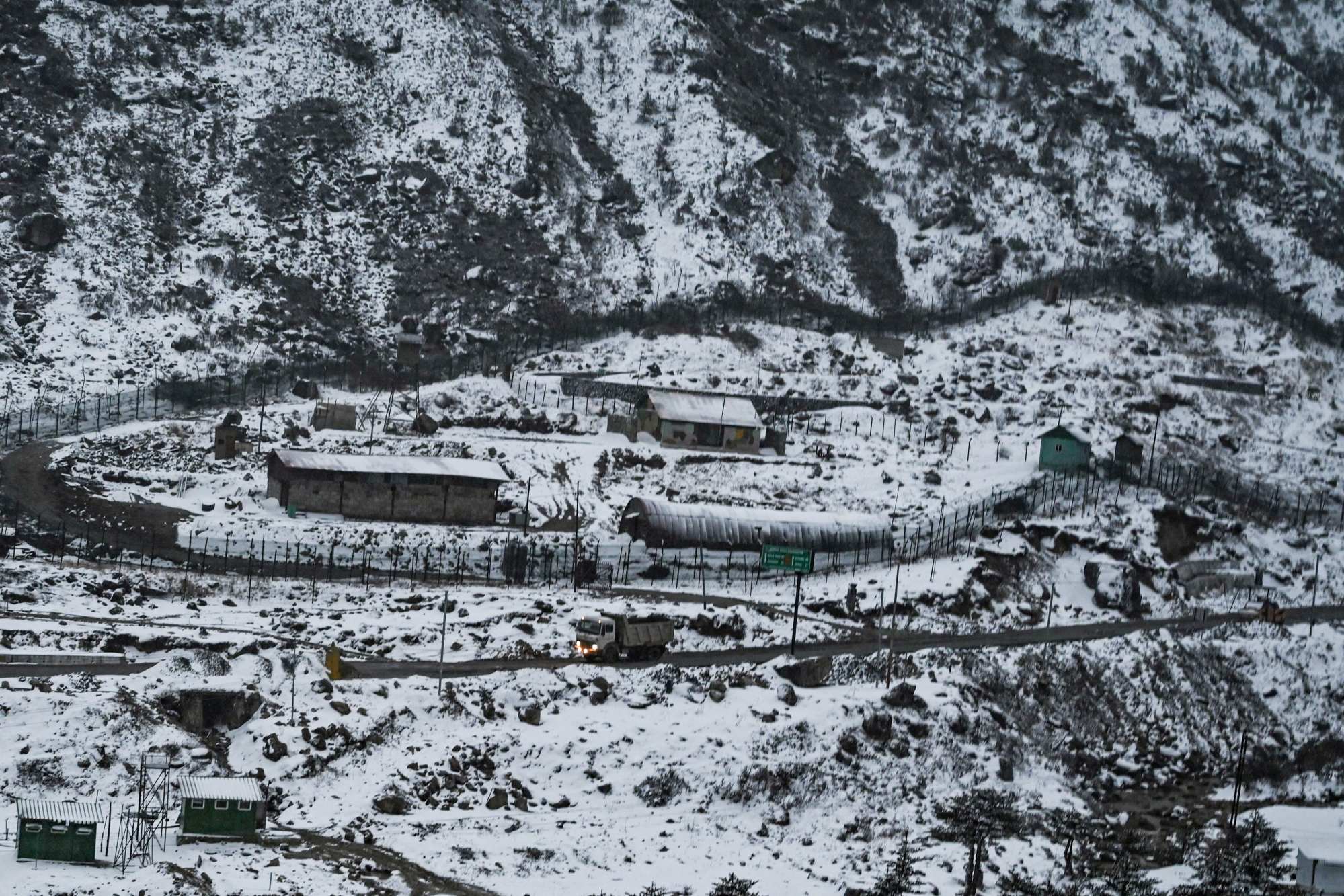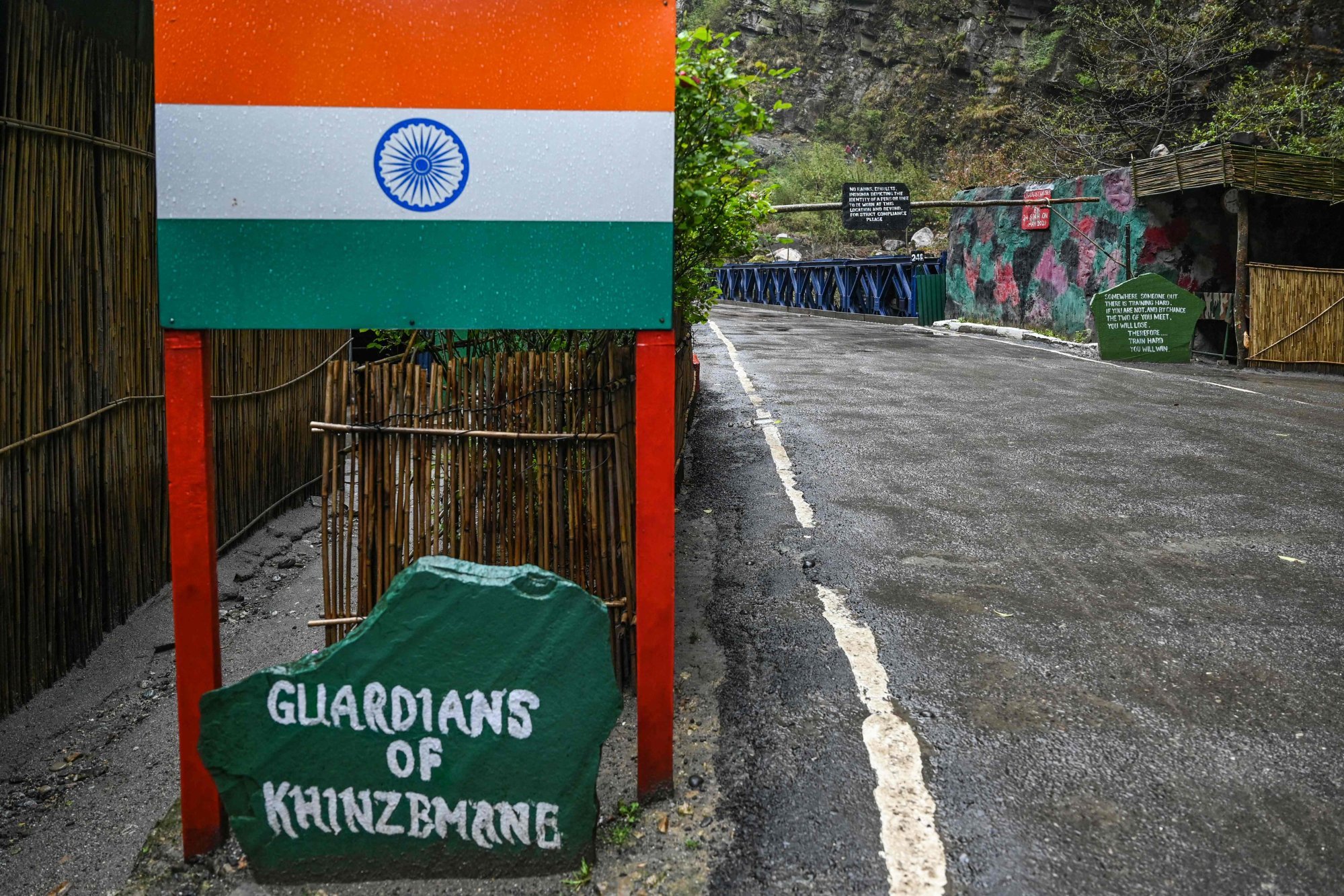
‘Statement to China’: India’s strategic Sela tunnel raises tensions as New Delhi boosts border control
- The opening of the world’s longest twin-lane tunnel sparked a war of words between Beijing and New Delhi, as each claims Arunachal Pradesh for its own
- The tunnel enables all-weather troop deployments and other movements as part of India’s efforts to address border vulnerabilities, analysts say
The Chinese government rejected Modi’s inauguration of the tunnel, calling the region an “inherent part of China’s territory”, while Indian authorities responded by slamming Beijing’s remarks as “absurd”, insisting Arunachal Pradesh was “an integral and inalienable part of India”.

The lack of connectivity in Arunachal Pradesh has been a disadvantage for India when compared with China’s better infrastructure along the border. The previous single-lane route to the Sela Pass would often have close after heavy snowfall, preventing heavy vehicles and container trucks from reaching Tawang.
Harsh V. Pant, vice-president for studies and foreign policy at the Observer Research Foundation, a Delhi-based think tank, said the Sela tunnel underscored India’s resolve to enhance its border infrastructure.
“India was lackadaisical about border infrastructure, but after 2020 [Galwan clashes], there was a serious push to accelerate it. The Sela tunnel is a statement to China that India is prepared for the long haul,” Pant said.
Unreported border clashes between Chinese, Indian troops took place in 2022
Situated at an elevation of 13,000 feet (3,962 metres) and costing an estimated 8.25 billion rupees (US$99 million), the tunnel project spans about 12km, with more than 8km of approach road.
Pant said it was standard Chinese procedure to object to any construction work in Arunachal Pradesh.
“China’s objection to development in Arunachal Pradesh is not new. They consider it South Tibet and have consistently opposed Indian presence in the region, despite lacking any de facto control. They raise objections whenever there is any activity in the region,” he said.

Closing the gap
India is revamping its border infrastructure, with the ruling Bharatiya Janata Party government increasing the Border Roads Organisation’s budget fourfold since 2014. The annual allocation has risen from 37.8 billion rupees in 2013-14 to 143.9 billion rupees in 2023-24, aimed at accelerating the construction of strategic roads along India’s borders.
Several border roads and tunnels are being built in the western Himalayas and Ladakh, including an approach road to the Siachen Glacier and an air force station in Nyoma, about 50km from the Line of Actual Control, the disputed India-China border.
Dr M.S. Prathibha, an associate fellow at the Institute for Defence Studies and Analyses, said construction of the Sela tunnel was part of India’s broader border infrastructure.
“India is also responding to Chinese military modernisation. The construction of Sela tunnel is part of the larger goal of developing Arunachal Pradesh, which has been neglected for so long,” Parthibha said, adding that Delhi aimed to address infrastructure vulnerabilities to reduce the asymmetry of its capabilities compared to China.
‘Difficult to agree’: China-India border row spills over into water resources
According to Parthibha, the Galwan clashes served as a wake-up call for India, prompting it to accelerate the development of its border infrastructure, including roads, bridges, airstrips and troop accommodation.
Defence expert DS Hooda told This Week in Asia that since the 2020 Galwan stand-off, there had been a significant focus on enhancing infrastructure along the Line of Actual Control.
Hooda, a retired lieutenant general, said that many of India’s positions and outposts along the Line of Actual Control used to get cut off in winter amid heavy snowfall.
“Most of these passes would get cut off, putting pressure not only on maintaining them during winter but also making it difficult to move additional forces in case of emergencies,” he noted.

Hooda stressed that Tawang was the most critical sector in Arunachal Pradesh, and the Sela tunnel would provide all-weather connectivity, enabling the movement of troops and logistics.
According to reports, India has redirected 1,000 military personnel to its western borders to protect the frontier with China, joining 9,000 troops already guarding a 530km stretch separating China’s Tibet region from India’s northern states of Uttrakhand and Himachal Pradesh.
“China’s terrain is mostly the Tibetan plateau, so facilitating road and railway construction is easier. In contrast, India has to navigate plains, Himalayan foothills, and ascend to the watershed. Despite these challenges, rapid infrastructure development will enhance Indian military capability,” Hooda said.
A souring relationship

B.R. Deepak, a professor of Chinese and China Studies at Jawaharlal Nehru University, said China’s claim on Arunachal Pradesh dated back to the Simla Convention of 1913-14.
While China had indicated it did not want to harm trade and economic ties despite the border dispute, Deepak said the posturing of both sides would dictate what happened in future.
“China has adopted a tough stance on the border, expecting India to accept the new modus operandi seen along the eastern border after the 2020 Galwan incident. However, I don’t believe India will agree,” he said.
“[External Affairs Minister Subrahmanyam] Jaishankar has consistently conveyed to China, through various platforms, that the current status quo is unacceptable.”
Deepak, author of India and China: Beyond the Binary of Friendship and Enmity, said the US’ statement held great significance for India.
“This is a positive development from India’s perspective in terms of international recognition of its borders,” he said.

Pant of the Observer Research Foundation called the current India-China relationship “abnormal”, arguing the onus was on Beijing to determine the future direction of ties.
“China is responsible for unilaterally trying to alter the border status quo. It must decide whether to resolve issues through diplomacy and negotiations or continue with unilateral actions such as pushing boundaries, building roads in contested areas, and using force,” he said.
On the US statement, Pant added: “I believe the India-US relationship has matured to a point where Washington is now comfortable speaking in favour of India regarding the boundary dispute, something it avoided in the past.”
However, he said he did not expect any improvement in the bilateral relationship before India’s general elections.
“The new government will need to define its China policy. If the current government continues, it’s clear how they will proceed. The relationship will be highly contested,” he said.

